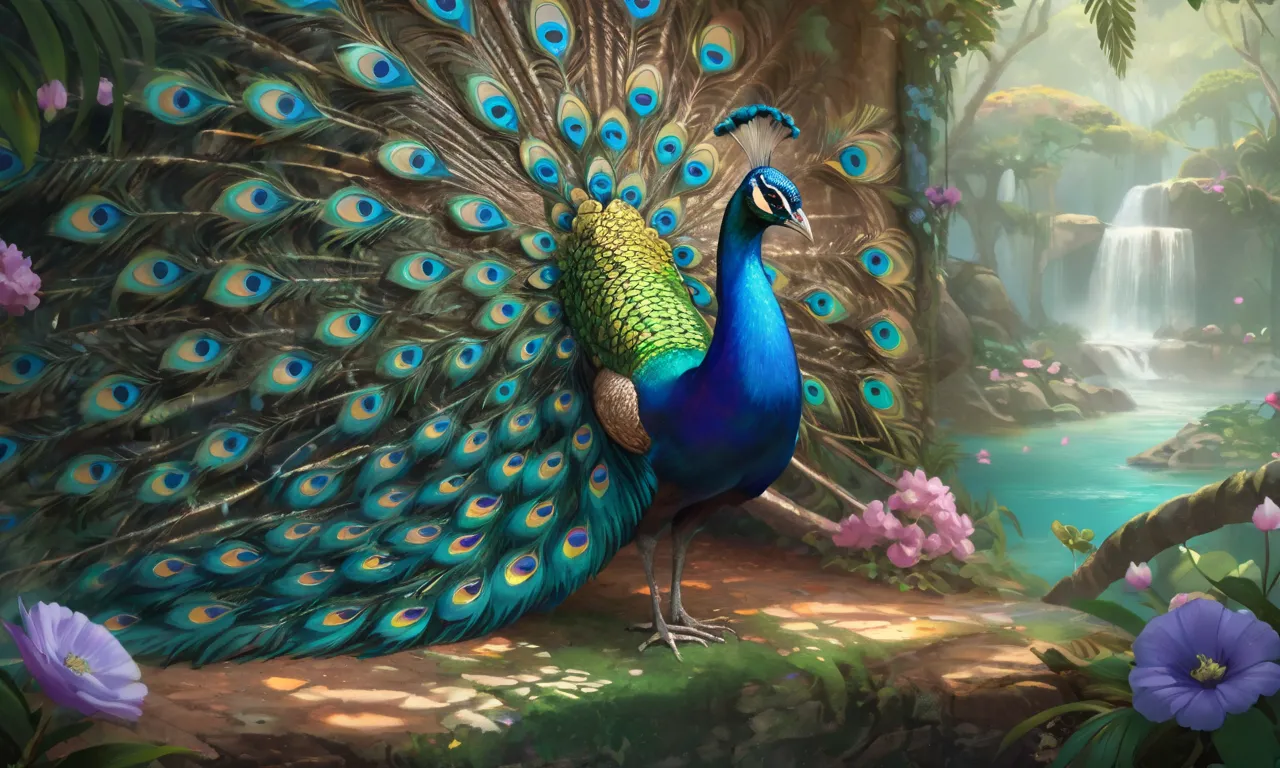Dream Of Peacock

The peacock is a symbol of beauty and elegance. Its resplendent plumage, vibrant colors, and intricate patterns have captured the imagination of people for centuries. In India, the peacock holds a special place in the hearts of its citizens; it’s not only a symbol of national pride but also a living embodiment of their culture. This article delves into the captivating allure of the dream of peacock and explores its significance in Indian culture.
The National Bird: A Symbol of Beauty and Grace
The peacock is an integral part of the Indian national emblem, which represents India’s diverse culture and rich heritage. Its iridescent plumage, with shades ranging from blue to green and gold, is a stunning sight to behold. The peacock’s feathers are not only an aesthetic delight but also hold spiritual significance for Hindus.
In Hindu mythology, the peacock is associated with Lord Shiva, the god of destruction and transformation. It is believed that the peacock’s call signifies the beginning of creation, while its beautiful plumage symbolizes the cycle of life and death. The bird is also considered a symbol of immortality, as its feathers never lose their luster or fade away.
The Peacock Dance: A Spectacle to Remember
One of the most fascinating aspects of peacocks is their elaborate mating dance, which showcases their vibrant plumage and captivating display of colors. This dance, known as “raja-nata,” involves a series of complex movements, including tail fanning and feather erection, that attract female peacocks.
In India, the peacock dance has been an integral part of traditional art forms like Bharatanatyam, Kathak, and Odissi. This dance form incorporates elements of the peacock’s mating ritual, creating a visual spectacle that mesmerizes audiences worldwide. The graceful movements, coupled with intricate costumes and elaborate makeup, make it an unforgettable experience for those who witness it.
Peacocks in Indian Art and Literature
Peacocks have been a frequent subject of Indian art and literature throughout history. They are often depicted in temple murals, miniature paintings, sculptures, and textiles, symbolizing beauty, prosperity, and good fortune. The peacock is also a popular motif in traditional Indian jewelry, where it is crafted into intricate designs using precious stones like diamonds, rubies, and emeralds.
In Indian literature, the peacock has been celebrated as a symbol of love, beauty, and happiness. One notable example is from the Mahabharata, an ancient Sanskrit epic, where the peacock plays a significant role in the story of Shiva and Parvati. The bird’s mesmerizing dance captivates the goddess, who eventually agrees to marry Lord Shiva after witnessing its enchanting display.
Conservation Efforts for the Peacock
Despite their cultural significance, peacocks are facing threats from habitat loss and human encroachment. As urbanization continues to spread across India, natural habitats like forests and grasslands are being destroyed, leading to a decline in peacock populations. To address this issue, various conservation efforts have been initiated by government agencies and NGOs alike.
One such initiative is the establishment of protected areas known as “peafowl sanctuaries.” These sanctuaries provide a safe haven for peacocks and other wildlife, allowing them to thrive without fear of persecution. Additionally, public awareness campaigns have been launched to educate people about the importance of preserving these majestic birds for future generations.
A Symbol of National Pride
The dream of peacock holds a special place in the hearts of Indians, symbolizing their rich cultural heritage and national identity. From its role as an integral part of religious rituals to its appearance on currency notes and government buildings, the peacock has become synonymous with India’s unique charm and allure.
In conclusion, the dream of peacock is not just a pretty bird; it represents the essence of Indian culture and tradition. Its mesmerizing beauty, captivating dance, and significant role in art and literature make it an iconic symbol that continues to inspire and captivate people around the world. As we strive to conserve these magnificent creatures for future generations, let us remember their importance not only as symbols of beauty but also as ambassadors of India’s rich cultural heritage.
List of Key Facts:
- The peacock is the national bird of India.
- Its vibrant plumage and graceful dance have been celebrated in Indian art and literature for centuries.
- In Hindu mythology, the peacock is associated with Lord Shiva, representing immortality and transformation.
- Peacocks are facing threats from habitat loss due to urbanization, leading to conservation efforts such as protected sanctuaries and public awareness campaigns.
- The dream of peacock serves as a symbol of national pride, showcasing India’s unique charm and cultural heritage.






